06 Semantic Analysis
Attribute¶
May hold almost any thing: a string, a number, a memory location, a complex record.
Semantic Rules¶
Semantic rules set up dependencies between attributes which can be represented by a dependency graph. This dependency graph determines the evaluation order of these semantic rules.
Evaluation of a semantic rule defines the value of an attribute. But a semantic rule may also have some side effects such as printing a value.
SDD¶
SDD (Syntax Directed Definition) is a CFG with semantic rules, where each
- Grammar symbol is associated with a set of attributes
- Production rule is associated with a set of semantic rules (will be provided)
If \(X\) is a symbol and \(a\) is one of its attribute, then \(X.a\) denotes value at \(X\)
This set of attributes for a grammar symbol is partitioned into two subsets called synthesized and inherited attributes of that grammar symbol.
Properties¶
- give high-level specifications for translations
- hide many implementation details such as order of evaluation of semantic actions.
- We associate a production rule with a set of semantic actions, and we do not say when they will be evaluated
IDK¶
Each production \(A \to \alpha\) is associated with a set of semantic rules of the form
\(b=f(c_1,c_2, \dots ,c_n)\) where \(f\) is a function, and \(b\) can be one of the following
- \(b\) is a synthesized attribute of A and \(c_1, c_2, ... ,c_n\) are attributes of the grammar symbols in the production \(A \to \alpha\)
- \(b\) is an inherited attribute one of the grammar symbols in \(\alpha\), and \(c_1,c_2, \dots, c_n\) are attributes of the grammar symbols in the production \(A \to \alpha\)
Types of Attributes¶
Consider
| Synthesized | Inherited | |
|---|---|---|
| Meaning | Node takes values from children | Node takes values from parent/sibling |
| Example | A.s = B.sA.s = C.sA.s = D.s | C.i = A.iC.i = B.iC.i = D.i |
Types of SDD¶
| Type | |
|---|---|
| S-Attributed Definitions/ S-Attributed SDD/ S-Attributed Grammar | Only synthesis |
| L-Attributed Definitions/ L-Attributed SDD/ L-Attributed Grammar | - Synthesis - Inheritance from parent/left-siblings (from previous example: C.S = A.S, C.S=B.S, not C.S = D.S) |
Unlike regular SDD, these attribute grammars cannot have side effects (such as printing values); they can only evaluate values of attributes.
Translation Schemes¶
Indicate the order of evaluation of semantic actions associated with a production rule
Compared to SDD, they give some information about implementation details
Annotated Parse Tree¶
Parse tree showing the values of attributes at each node
Process of computing attributes values at nodes is called annotating/decorating
Order of these computations depends on the dependency graph induced by the semantic rules
Example: \(5+3*4\)¶
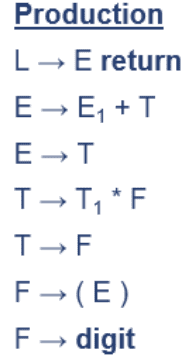
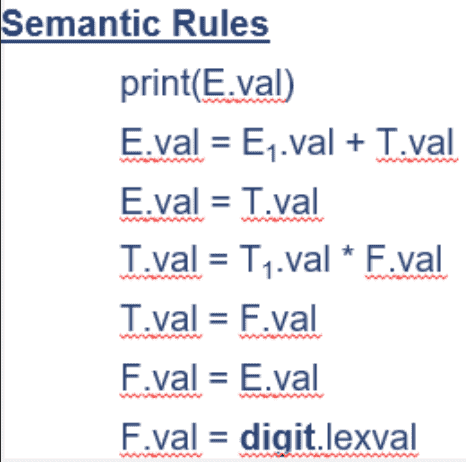
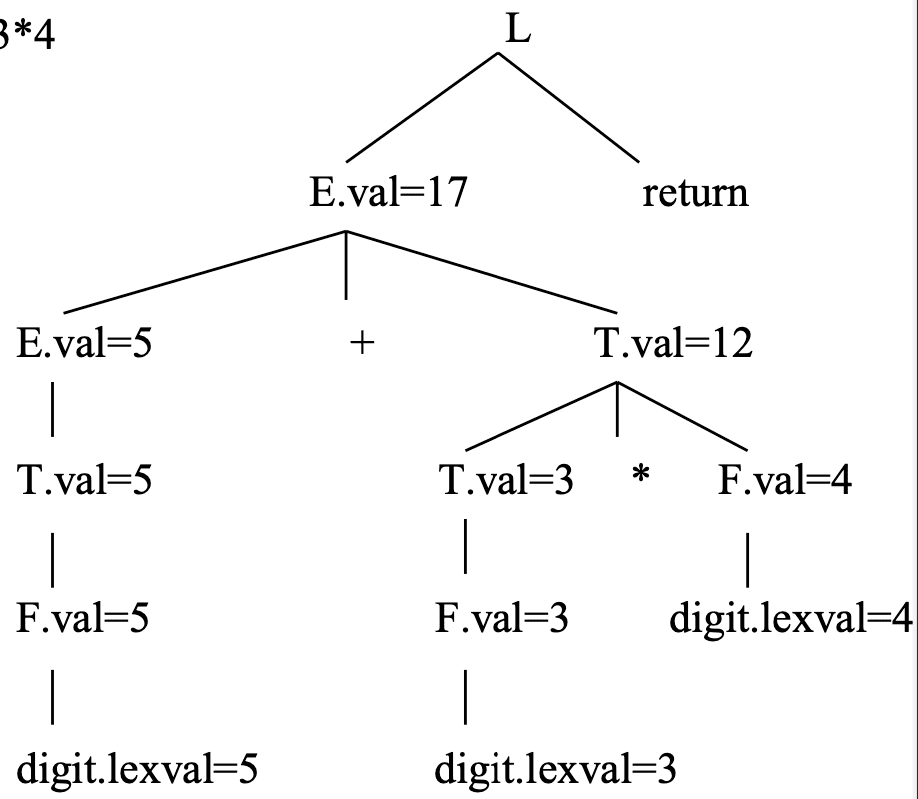
Dependency Graph¶
All updward arrows, since this S-Attributed: all parents inherit from child(ren).
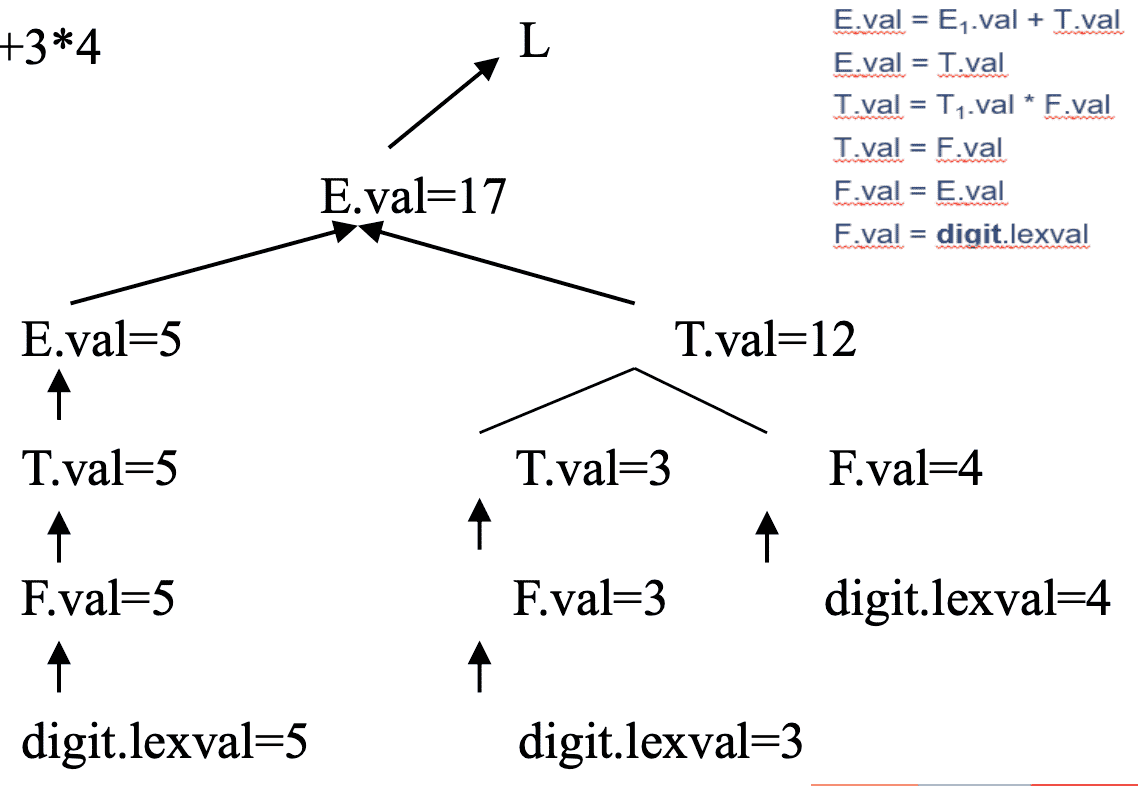
Example: real p, q¶
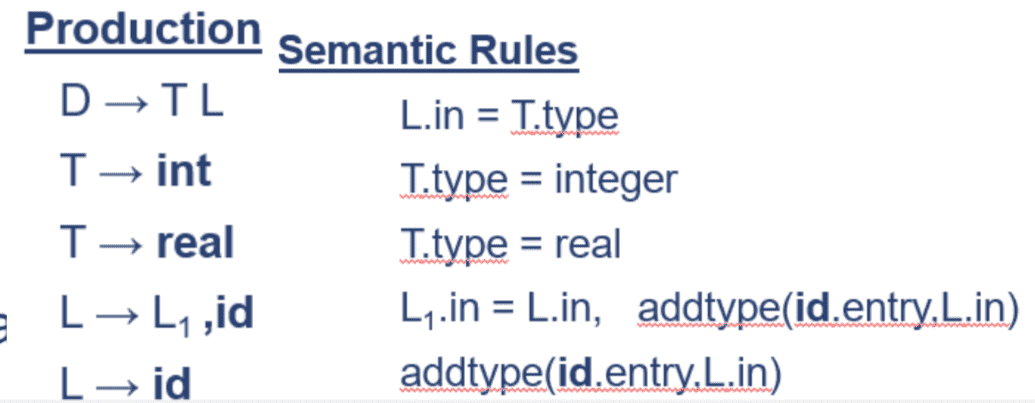
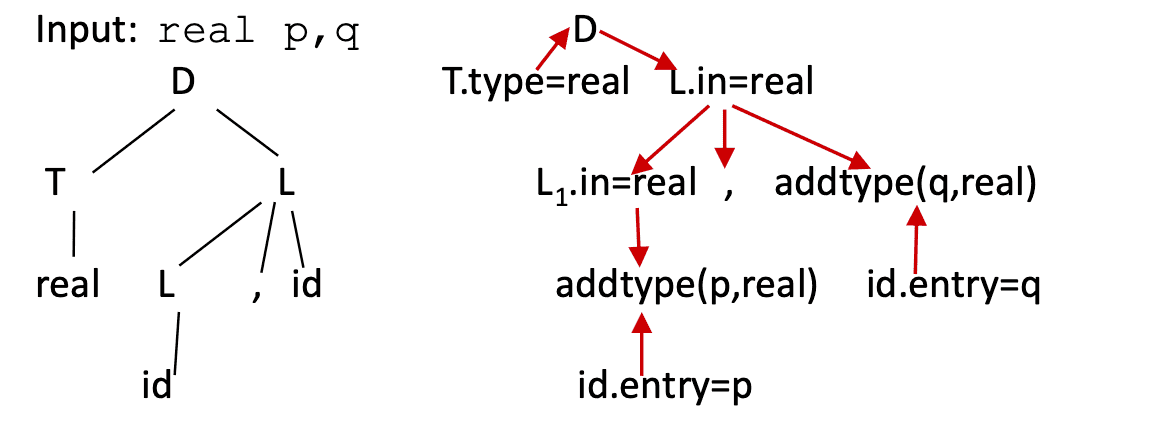
Example: \(3*5\)¶
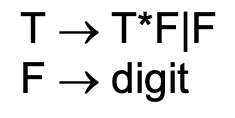
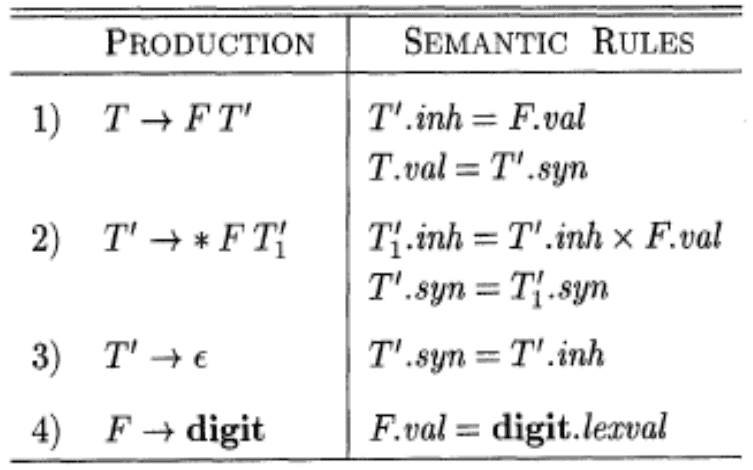
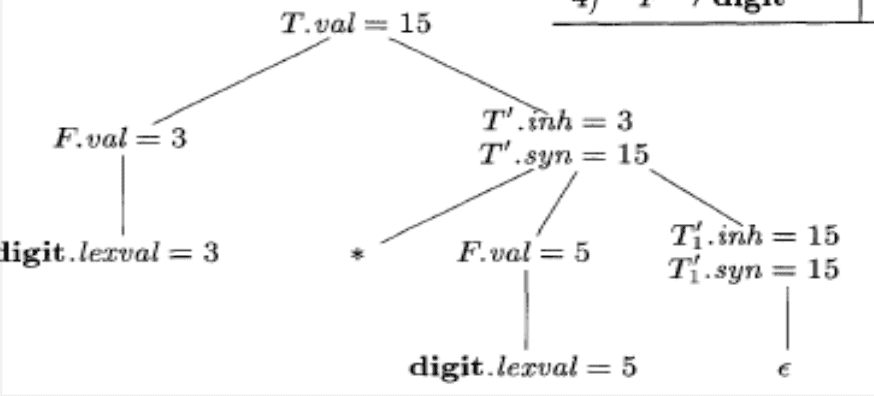
Syntax-Dericted Translation¶
Combination of CFG, Semantic Rules, and Semantic Actions denoted in {} can be placed anywhere in RHS
Eg: Conversion of infix to postfix: \(2+3*4\)¶
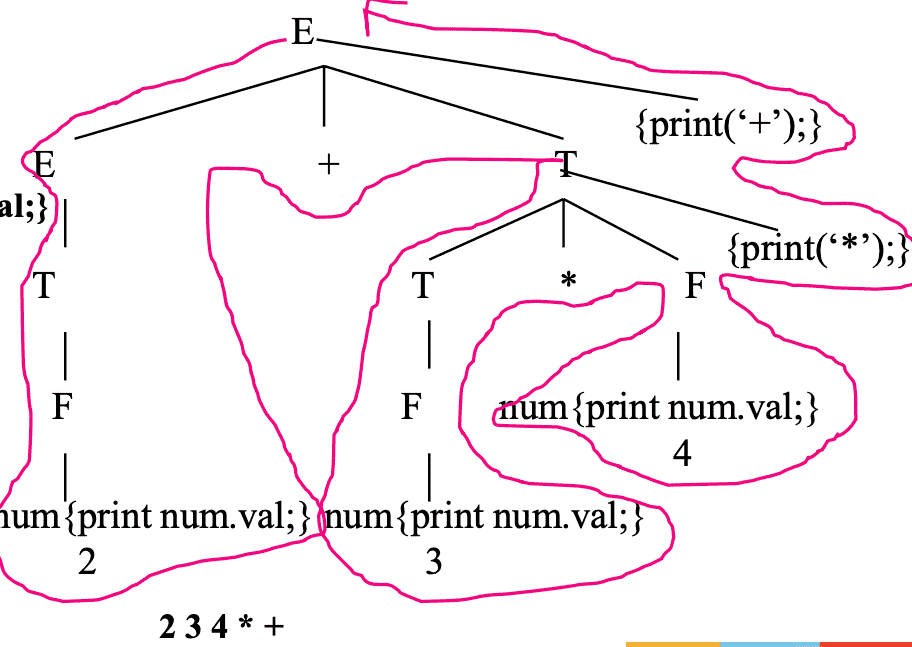
Eg: Conversion of infix to postfix: \(1+2\)¶

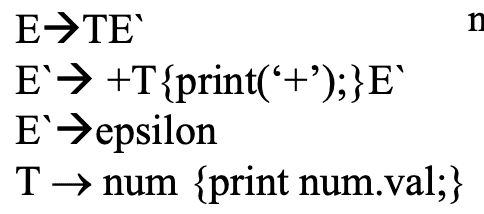
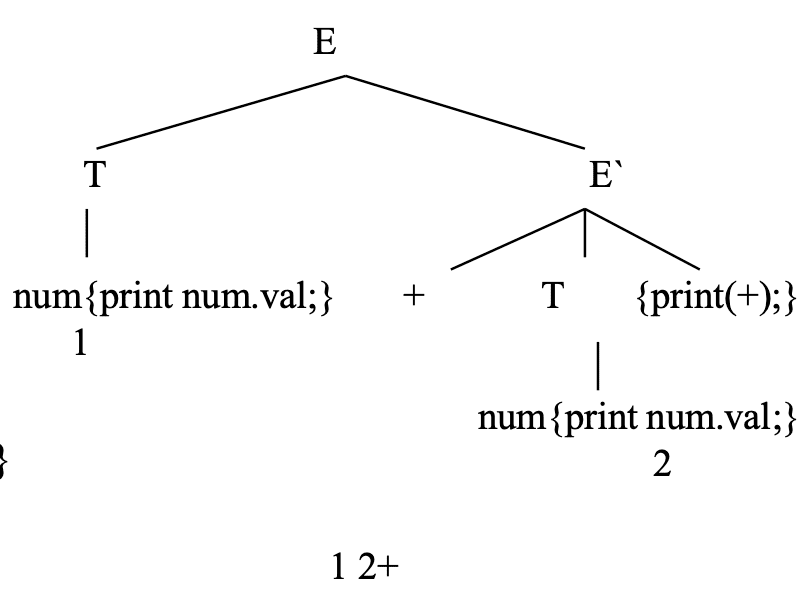
Coercions¶
Binary arithmetic operator may be applied to either a pair of integers or to a pair of floating-point numbers.
If an operation involves a float and an integer, the compiler may convert/coerce the integer into a float